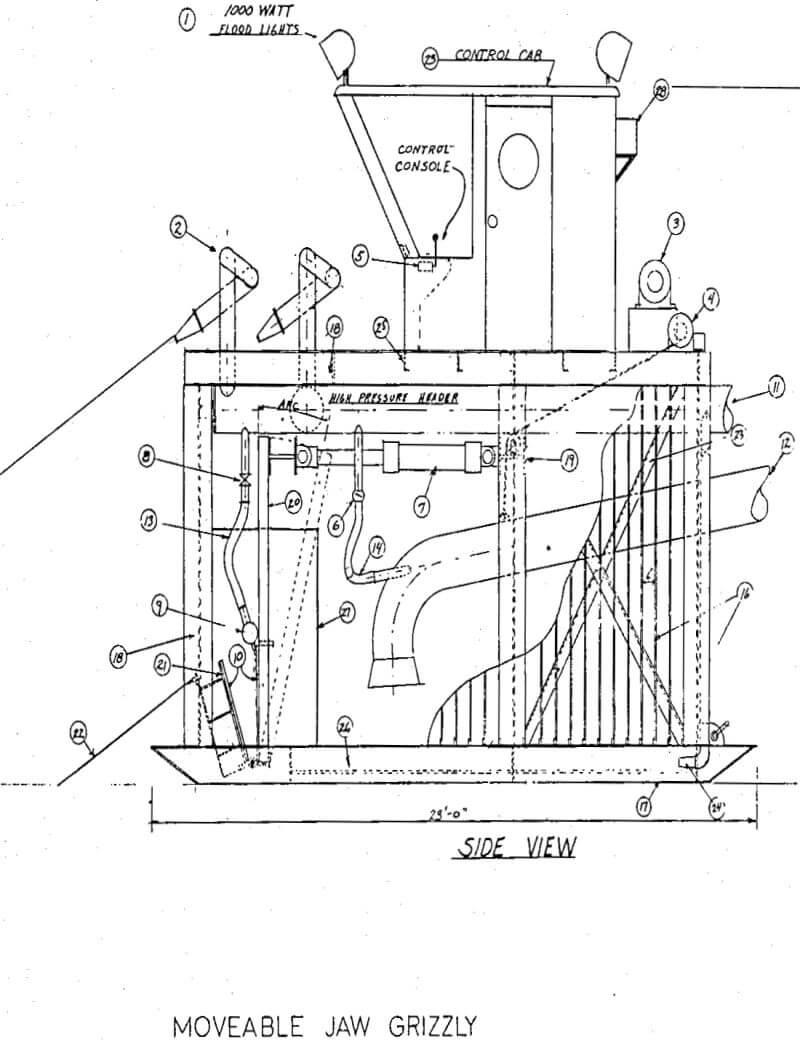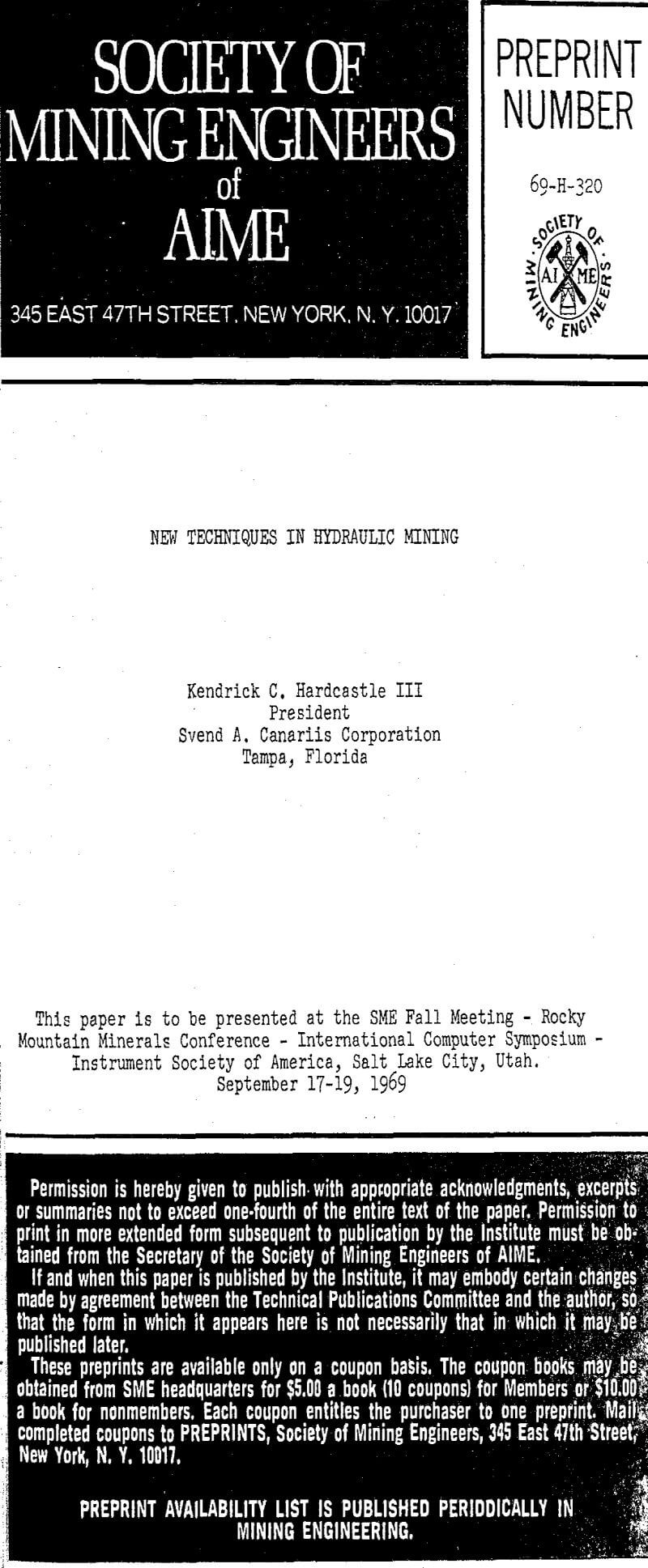The practice of transporting an ore or matrix from a pit area to the plant process area by means of a hydraulic pipeline has long been used by the mining industry. The industries which have classically used hydraulic transportation of ore to the plant include the phosphate mining industry, the heavy minerals mining industry, the clay mining industry, and the sand mining industry. As the advantages of this method become better known throughout the mining industry as a whole, and as techniques and expertise improve, its use will undoubtedly spread.
The widely recognized advantages of hydraulic transportation of ore from the pit area to the mines are:
- Its relatively low initial capital costs.
- Its speed of relocation at the mine site.
- The washing and scrubbing action given to the ore by its hydraulic passage into the pit pump and the subsequent trip through booster pumps down the pipeline to the plant.
The average hydraulic mining pit in use today consists of a dragline used for removing the matrix from its in situ location and depositing it in a well or pit. Around this pit are stationed high pressure hydraulic monitors which are used for the dual purpose of slurrying the material in this well and breaking up pieces of clay or other relatively soft material. At one corner of this pit is submerged a stationary grizzly which attempts to screen out material larger than that which can successfully be handled by the pit pump. Downstream of this submerged stationary grizzly is the pit pump suction. The pit pump suction picks up whatever liquid and materials flow into its cone of influence and the slurry is subsequently drawn into the pit pump, down the matrix line through booster pumps, and introduced in the plant process stream.
Further, economic and process problems are concomitant with and caused by, this variation in the rate of feed delivered to the plant. As plants are bought and their process equipment generally sized on a tons-per-hour basis, the tonnage of material handled is of primary interest. That is to say, the gallons per minute handled by a matrix line system is only of secondary importance.
When a greatly varying rate of solids input to a plant is a predicate of design, then the capital costs of the plant are greatly increased, due to having to size equipment based on the peak of various surges. Further, the in-production utilization of this equipment is greatly reduced because its average rate of usage is somewhat less than its design rate, which generally had been based on the peaks and surges.
The most costly aspect to this situation seems to be that the process efficiency of various pieces of equipment is always rather low, because, to some extent, the machinery is either being overloaded or underloaded most of the time. The recovery of the desirable product is always less than optimum because of the fluctuation in solids rates through various pieces of equipment.
Economic considerations and portability considerations normally indicate a consolidation of pit functions above this moveable jaw grizzly. A gun house (Part 2), is generally placed on top of this structure with the hydraulic monitors (Part 2) themselves being on the front of the structure. The control of the guns and the control of the various pit functions are stationed within this gun house and, in fact, the whole pit operation is controlled from this location.
As presently being supplied, the pattern and control of the guns is generally handled by automatic gun controls.
The features of this unit which can be used to affect control over the problems mentioned above are four:
- As the larger and heavier solids tend to fall into the bottom of the well and the lighter and finer solids tend to congregate near the top of the liquid-solids mixture, a hydraulic winch (Part 4) is provided to raise and lower the suction of the matrix pump.
- As the solids passing capability of the jaw and crushing capability of this unit is, to some extent, dependent upon the oscillation rate of this jaw, a control of the amount of solids entering this well can be affected by changing the speed at which the jaw oscillates.
- An increase or decrease of solids concentration within the well area can be affected by the introduction of dilution water through the bustle around the suction line booster jet pump.
- An increase in solids to the suction pipeline can be, to some extent, affected by increase or decrease of capacity to the venturi part of the suction jet pump.
The four controls mentioned are features afforded by this piece of machinery to affect the solids concentration within the hydraulic conveying system heretofore unavailable in conventional pit arrangement. Add to this, the combining of several normally separately used pieces of equipment into one piece for ease of moving, the availability of automatically programmed hydraulic monitors, and the intrinsic overall capital cost economics, and this piece of equipment seems to highly recommend itself.



